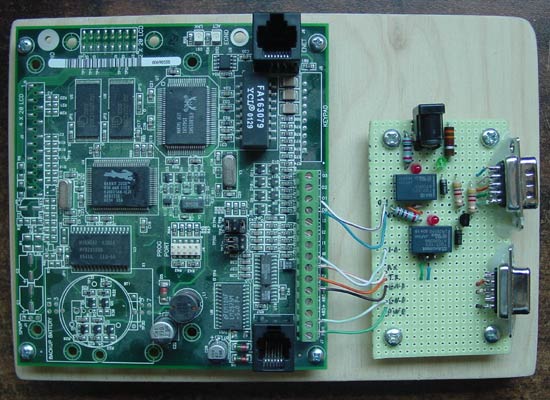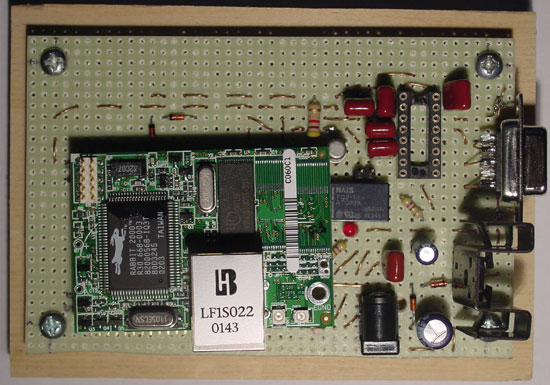Remote Server Manager
My server is located in Santa Rosa, but I live in Davis most of the time. I wanted a device
that would let me reboot the server remotely in case it crashes. After searching the net and
not finding any product for this purpose (that I could afford, anyway), I decided to build
my own.
The design uses a microcontroller with ethernet connectivity. The first version (2002) was based on an
RCM2200 module from
Rabbit Semiconductor.
In 2003 I built a second version, using their
TCP/IP Development Kit.
If I were to design a similar device in the future, I might consider using an open-source
Ethernut. (I'm a bit frustrated with Rabbit because they charge for software upgrades.)
Two small relays are connected across the
ATX power switch and front panel reset button of the server. The +5V power supply of the server is fed back
to a microcontroller input pin and used to determine whether the server is powered on. In addition to supporting
remote logins for manual control, the microcontroller can be configured to periodically ping the
the server and automatically reset it if no replies are received.
One of the microcontroller's RS232 ports is connected to the console port of the server. This allows
telnet access for troubleshooting and repair even if the server's network drivers or SSH daemon are not working.
The following picture shows the version that I currently use (built in 2003):

The next photo is of the original design (built in 2002). It was designed for use with an AT computer
and interfaces with the reset switch but not the power switch. The empty IC socket is for a MAX232 chip,
which would allow remote console access.

|


